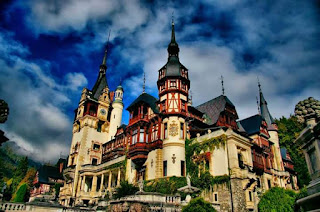 Castles stand as memories of the glorious past and they remind us of great historic events, of legends and romantic stories.In the old days, there was nothing the rich and powerful could do to show off their wealth and influence than to build a castle.Visiting these castles is like diving into our history. Discover the history of kings, of alliances and vendettas, the history of European territories, of wars, regions and nations, the history of those families who have made and unmade Whether it was intended for defense, or simply as a retreat, the castle was always an awesome and imposing sight.List of the most beautiful castles in the world, as ranked by castle and architecture enthusiasts. It’s not that common to come across a castle in your daily life. What once used to be a common structure for royalty,government officials, and the very, very wealthy has now being a rarer place of residence. And there's no better place to see proof of that than in Europe, from the stone fortresses of the Scottish highlands to the storybook lookalikes of Germany.There are so many breathtaking castles around the world and it’s very hard to make a list of the top 10. Here are 10 of the most beautiful castles on the entire continent.You’re welcome to disagree and add a comment with your favorite castles.
Castles stand as memories of the glorious past and they remind us of great historic events, of legends and romantic stories.In the old days, there was nothing the rich and powerful could do to show off their wealth and influence than to build a castle.Visiting these castles is like diving into our history. Discover the history of kings, of alliances and vendettas, the history of European territories, of wars, regions and nations, the history of those families who have made and unmade Whether it was intended for defense, or simply as a retreat, the castle was always an awesome and imposing sight.List of the most beautiful castles in the world, as ranked by castle and architecture enthusiasts. It’s not that common to come across a castle in your daily life. What once used to be a common structure for royalty,government officials, and the very, very wealthy has now being a rarer place of residence. And there's no better place to see proof of that than in Europe, from the stone fortresses of the Scottish highlands to the storybook lookalikes of Germany.There are so many breathtaking castles around the world and it’s very hard to make a list of the top 10. Here are 10 of the most beautiful castles on the entire continent.You’re welcome to disagree and add a comment with your favorite castles.10 – Mont Saint Michel, France
The small island of Saint Michel is one of the most famous landmarks in France. A rocky tidal island in Normandy, located approximately 1 km off the coast. The island’s highest point is 92 meters (301 feet) above sea level. The population of this UNESCO World Heritage Site is only a few dozens, but visited by more than 3 million people each year. The strong tides in the area change quickly, and connect and disconnects the island from the mainland on a daily basis The monastery/castle from which it draws its name was built as a medieval castle. It has two large towers to defend the entrance to the castle. This sanctuary became a symbol of the allied landing in Normandy during the Second World War.
09 – Neuschwanstein Castle, Germany
Neuschwanstein Castle, – German for “New Swanstone Castle”, this castle is a 19th-century palace on a rugged hill in Bavaria, Germany. The palace was commissioned by Ludwig II of Bavaria as a retreat and was opened to the paying public immediately after his death in 1886. More than 1.3 million people visit the castle annually.This nineteenth-century Romanesque Revival palace was built on a rugged hill above the village of Hohenschwangau, located in southwest Bavaria. The palace is an homage to Richard Wagner from Ludwig II of Bavaria. More than 1.3 million people visit the monument each year. The palace has appeared in several famous movies and was the inspiration for Disneyland’s Sleeping Beauty Castle.
08 – Hohensalzburg Castle, Austria
Hohensalzburg Castle, – One of the oldest most preserved castles of Europe, Hohensalzburg was built in the 11th century and expanded in the 14th century. It is located on a mountain in Salzburg.Hohensalzburg Castle sits atop the Festungsberg, a small hill in the Austrian city of Salzburg. Erected at the behest of the Prince-Archbishops of Salzburg with a length of 250 m (820 ft) and a width of 150 m (490 ft), it is one of the largest medieval castles in Europe. Hohensalzburg Castle is situated at an altitude of 506 m. With a length of 250 meters (820 ft) and a width of 150 meers (490 ft), it is one of the largest medieval castles in Europe It is situated on a small hill in the Austrian city of Salzburg, at an altitude of 506 m. The beautiful castle was refurbished from the late 19th century onwards and became a major tourist attraction with the Festungsbahn cable car, opened in 1892, leading up from the town to the Haingraben Bastei. It stands today as one of the best preserved castles in Europe.
07 – Conwy Castle, Wales
Conwy Castle, – A medieval fortification on the north coast of Wales, built by Edward I during his conquest of Wales in the 13th century. The huge investment on this 8 towers castle makes it the most expensive of all castles made by Edward I and also the most prominent.UNESCO stated that Conwy is one of “the finest examples of late 13th century and early 14th century military architecture in Europe”, and it is classed as a World Heritage site. The medieval fortification was built by Edward I, during his conquest of Wales. The castle played an important role in several wars and it acted as a temporary haven for Richard II in 1399.
06 – Prague Castle, Czech Republic
Prague Castle, One of the largest and oldest castles in the world. The construction of the castle began as early as the ninth century and it is 570 meters long and around 130 meters wide.According to the Guinness Book of Records, It is the largest ancient castle in the world. It dates from the 9th century and it is currently the official residence of the President of the Czech Republic. The castle was a seat of power for kings of Bohemia, Holy Roman emperors, and presidents of Czechoslovakia. The Bohemian Crown Jewels are kept within a hidden room inside it.
05 – Bran Castle, Romania
 Bran Castle, situated near Bran and in the immediate vicinity of Braşov, is a national monument and landmark in Romania. The fortress is situated on the border between Transylvania and Wallachia, on DN73. Commonly known as "Dracula's Castle" it is often erroneously referred to as the home of the title character in Bram Stoker's Dracula. There is, however, no evidence that Stoker knew anything about this castle, which has only tangential associations with Vlad the Impaler, voivode of Wallachia, the putative inspiration for Dracula. As discovered by the Dutch author Hans Corneel de Roos,[1] the location Bram Stoker actually had in mind for Castle Dracula while writing his novel was an empty mountain top, Mount Izvorul Călimanului, 2,033 metres (6,670 ft) high, located in the [Călimani Mountains near the former border with Moldavia. Stoker's description of Dracula's crumbling fictional castle also bears no resemblance to Bran Castle.It is a national landmark, surrounded by the famous legend of Dracula. It is in fact the home of the titular character in Bram Stoker’s novel, Dracula.The castle is currently a popular museum open to tourists, displaying art and furniture collected by Queen Marie. Tourists can see the interior individually or by a guided tour.
Bran Castle, situated near Bran and in the immediate vicinity of Braşov, is a national monument and landmark in Romania. The fortress is situated on the border between Transylvania and Wallachia, on DN73. Commonly known as "Dracula's Castle" it is often erroneously referred to as the home of the title character in Bram Stoker's Dracula. There is, however, no evidence that Stoker knew anything about this castle, which has only tangential associations with Vlad the Impaler, voivode of Wallachia, the putative inspiration for Dracula. As discovered by the Dutch author Hans Corneel de Roos,[1] the location Bram Stoker actually had in mind for Castle Dracula while writing his novel was an empty mountain top, Mount Izvorul Călimanului, 2,033 metres (6,670 ft) high, located in the [Călimani Mountains near the former border with Moldavia. Stoker's description of Dracula's crumbling fictional castle also bears no resemblance to Bran Castle.It is a national landmark, surrounded by the famous legend of Dracula. It is in fact the home of the titular character in Bram Stoker’s novel, Dracula.The castle is currently a popular museum open to tourists, displaying art and furniture collected by Queen Marie. Tourists can see the interior individually or by a guided tour.04 – Osaka Castle, Japan
The castle is one of Japan’s most famous landmarks. Toyotomi Hideyoshi wanted the castle to become the center of a unified Japan under Toyotomi rule.However,The castle is one of Japan's most famous landmarks and it played a major role in the unification of Japan during the sixteenth century of the Azuchi-Momoyama period. a few years after Hideyoshi’s death, Tokugawa troops attacked the castle and destroyed the Toyotomi lineage in 1615.The main tower of Osaka Castle is situated on a plot of land roughly one square kilometer. It is built on two raised platforms of landfill supported by sheer walls of cut rock, using a technique called Burdock piling, each overlooking a moat. The central castle building is five stories on the outside and eight stories on the inside, and built atop a tall stone foundation to protect its occupants from attackers. Osaka Castle was rebuilt by Tokugawa Hidetada in the 1620s, but its main tower was struck by lightening in 1665 and burnt.The castle grounds, which cover approximately 60,000 square meters (15 acres), contain thirteen structures that have been designated as important cultural assets by the Japanese government.
03 – Pele? Castle, Romania
 Peleș Castle is a Neo-Renaissance castle in the Carpathian Mountains, near Sinaia, in Prahova County, Romania, on an existing medieval route linking Transylvania and Wallachia, built between 1873 and 1914. Its inauguration was held in 1883. It was constructed for King Carol . Romania, on an existing medieval route linking Transylvania and Wallachia, built between 1873 and 1914.It was built by Charles I and it was inaugurated in 1833. Nowadays, it is one of the most visited monuments in Romania.The first three design plans submitted for Peleș were copies of other palaces in Western Europe, and King Carol I rejected them all as lacking originality and being too costly. German architect Johannes Schultz won the project by presenting a more original plan, something that appealed to the King's taste: a grand palatial alpine villa combining different features of classic European styles, mostly following Italian elegance and German aesthetics along Renaissance lines. Works were also led by architect Carol Benesch. Later additions were made between 1893 and 1914 by the Czech architect Karel Liman, who designed the towers, including the main central tower, which is 66 metres (217 ft) in height. The Sipot Villa, which served as Liman's headquarters during the construction, was built later on. Liman would supervise the building of the nearby Pelișor Chateau (1889–1903, the future residence of King Ferdinand I and Queen Marie of Romania), as well as of King Ferdinand's villa in the Royal Sheepfold Meadow.
Peleș Castle is a Neo-Renaissance castle in the Carpathian Mountains, near Sinaia, in Prahova County, Romania, on an existing medieval route linking Transylvania and Wallachia, built between 1873 and 1914. Its inauguration was held in 1883. It was constructed for King Carol . Romania, on an existing medieval route linking Transylvania and Wallachia, built between 1873 and 1914.It was built by Charles I and it was inaugurated in 1833. Nowadays, it is one of the most visited monuments in Romania.The first three design plans submitted for Peleș were copies of other palaces in Western Europe, and King Carol I rejected them all as lacking originality and being too costly. German architect Johannes Schultz won the project by presenting a more original plan, something that appealed to the King's taste: a grand palatial alpine villa combining different features of classic European styles, mostly following Italian elegance and German aesthetics along Renaissance lines. Works were also led by architect Carol Benesch. Later additions were made between 1893 and 1914 by the Czech architect Karel Liman, who designed the towers, including the main central tower, which is 66 metres (217 ft) in height. The Sipot Villa, which served as Liman's headquarters during the construction, was built later on. Liman would supervise the building of the nearby Pelișor Chateau (1889–1903, the future residence of King Ferdinand I and Queen Marie of Romania), as well as of King Ferdinand's villa in the Royal Sheepfold Meadow.02 – Versaille Castle, France
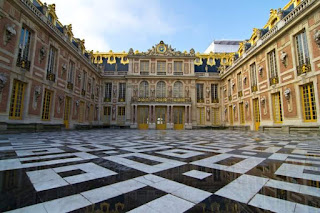 Château of Versailles is situated in a wealthy suburb of Paris, some 20 kilometres southwest of the capital. The court of Versailles was the centre of political power in France from 1682, when king Louis XIV moved from Paris, until the royal family was forced to return to the capital in October 1789 after the beginning of the French Revolution. Versailles is not famous only for its beauty, but also for its historic meaning, being the symbol of the absolute monarchy of the Ancien Régime.When the château was built, Versailles was a small village dating from the 11th century; today, however, it is a wealthy suburb of Paris, some 20 kilometres (12 miles) southwest of the centre of the French capital (point zero at square in front of Notre Dame). Versailles was the seat of political power in the Kingdom of France from 1682, when Louis XIV moved the royal court from Paris, until the royal family was forced to return to the capital in October 1789, within three months after the beginning of the French Revolution. Versailles is therefore famous not only as a building, but as a symbol of the system of absolute monarchy of the Ancien Régime.
Château of Versailles is situated in a wealthy suburb of Paris, some 20 kilometres southwest of the capital. The court of Versailles was the centre of political power in France from 1682, when king Louis XIV moved from Paris, until the royal family was forced to return to the capital in October 1789 after the beginning of the French Revolution. Versailles is not famous only for its beauty, but also for its historic meaning, being the symbol of the absolute monarchy of the Ancien Régime.When the château was built, Versailles was a small village dating from the 11th century; today, however, it is a wealthy suburb of Paris, some 20 kilometres (12 miles) southwest of the centre of the French capital (point zero at square in front of Notre Dame). Versailles was the seat of political power in the Kingdom of France from 1682, when Louis XIV moved the royal court from Paris, until the royal family was forced to return to the capital in October 1789, within three months after the beginning of the French Revolution. Versailles is therefore famous not only as a building, but as a symbol of the system of absolute monarchy of the Ancien Régime.01 – Chateau de Chillon, Switzerland
Chillon Castle is an island castle located on Lake Geneva , south of Veytaux in the canton of Vaud. It is situated at the eastern end of the lake, on the narrow shore between Montreux and Villeneuve, which gives access to the Alpine valley of the Rhone. Chillon is amongst the most visited castles in Switzerland and Europe. It is also known to be the inspiration behind the castle in The Little Mermaid movie. It is situated at the eastern end of the lake, on the narrow shore between Montreux and Villeneuve, which gives access to the Alpine valley of the Rhone. Therefore, the landscape surrounding the castle is truly beautiful, making Chillon one of the most visited castles in Switzerland and Europe.The oldest parts of the castle have not been definitively dated, but the first written record of the castle is in 1005. It was built to control the road from Burgundy to the Great Saint Bernard Pass From the mid 12th century, the castle was summer home to the Counts of Savoy, who kept a fleet of ships on Lake Geneva. The castle was greatly expanded in 1248.During the 16th century Wars of Religion, it was used by the dukes of Savoy to house prisoners. Its most famous prisoner was probably François de Bonivard, a Genevois monk, prior of St. Victor in Geneva and politician who was imprisoned there in 1530 for defending his homeland from the dukes of Savoy.
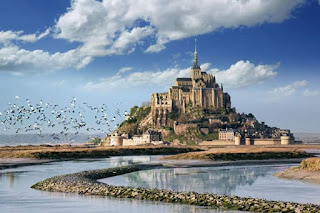

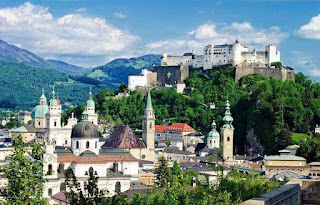
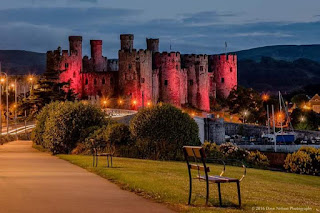
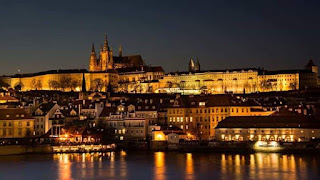


0 comments:
Post a Comment